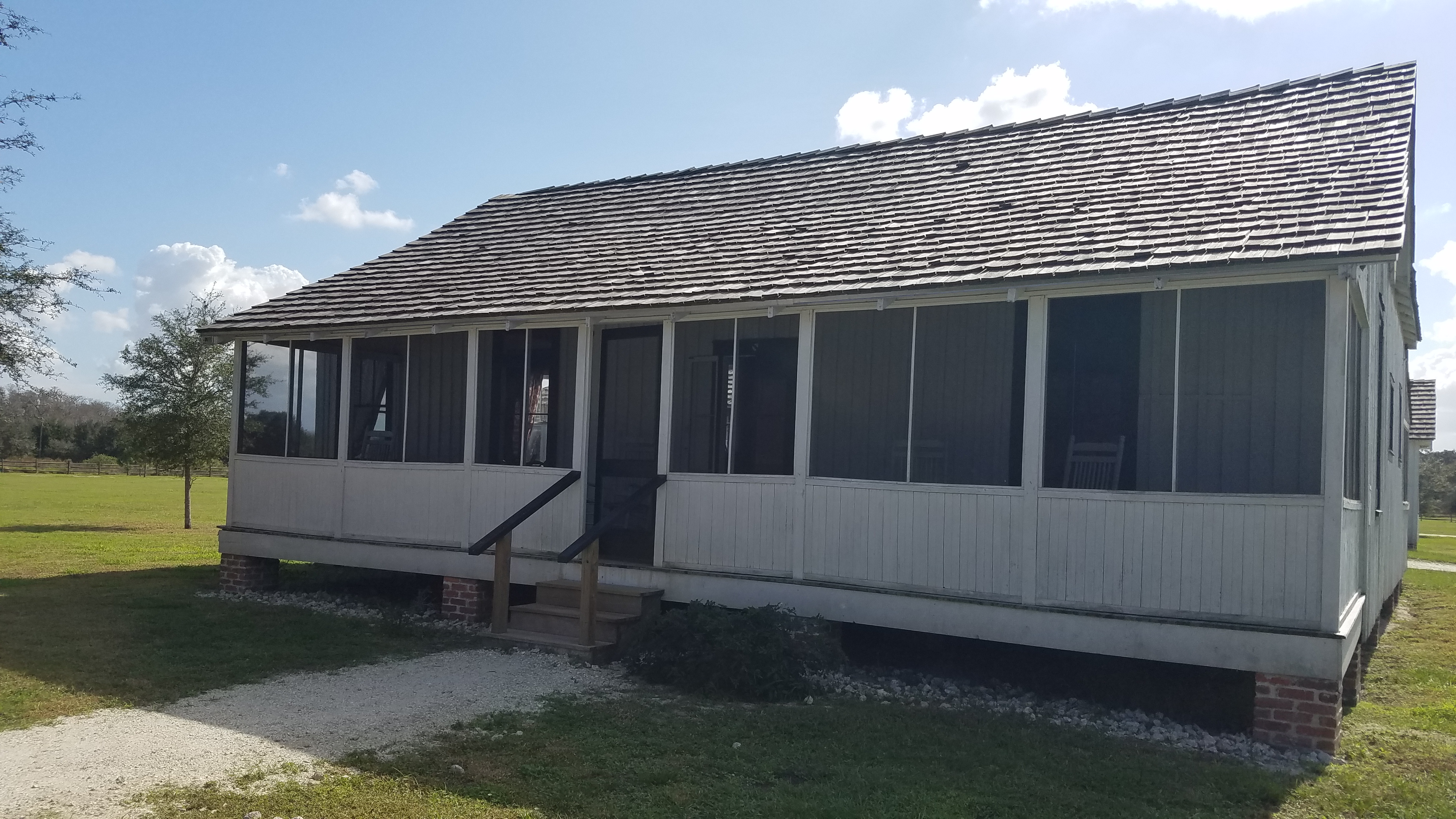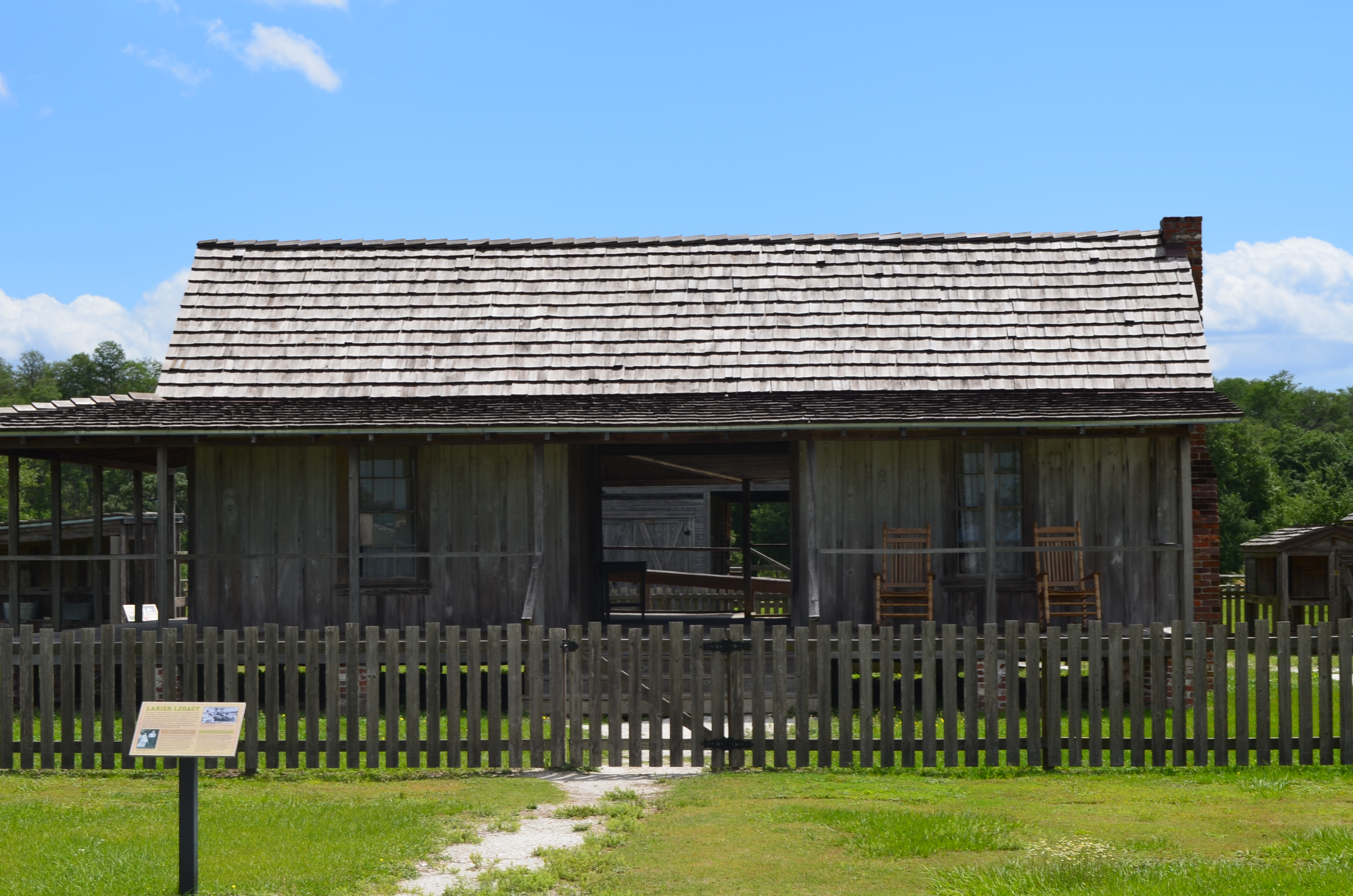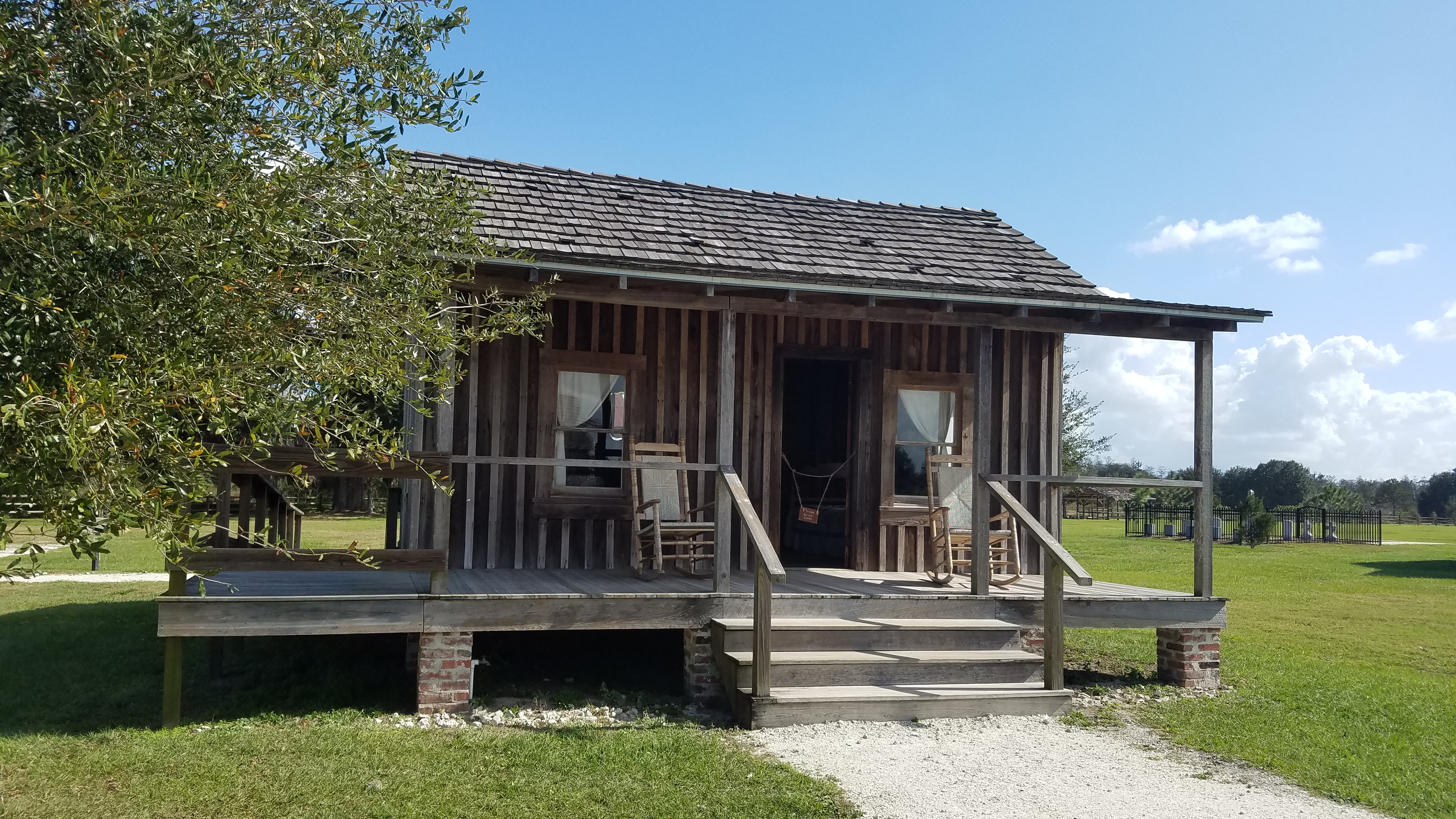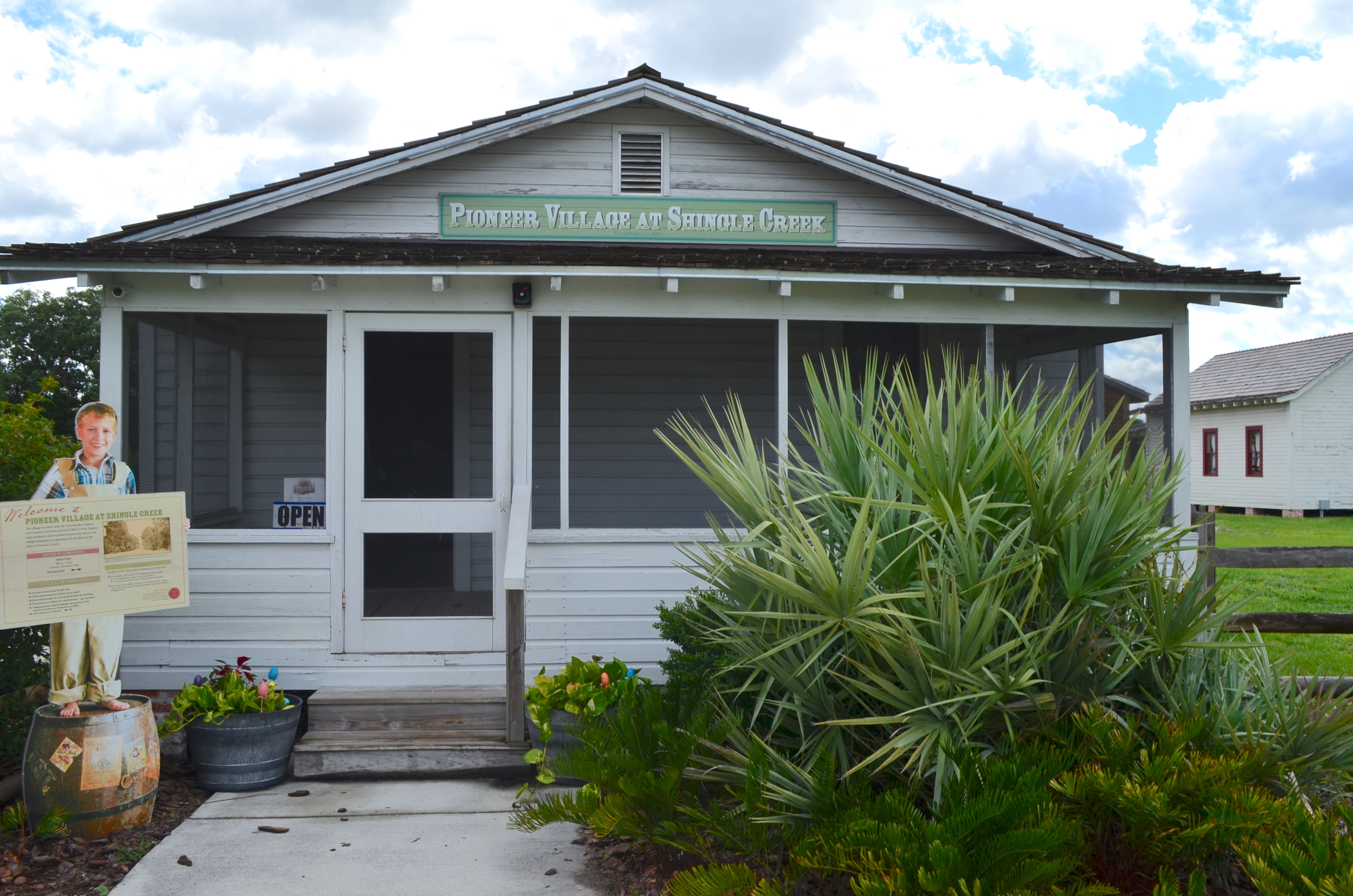May is National Preservation Month and Pioneer Village at Shingle Creek tells the story of Osceola County’s early settlers. The collection of 17 buildings includes four original homes that belonged to the Cadman, Lanier, Tyson, and Partin families. The homes date from the late 1800s to the 1930s. In all, Pioneer Village at Shingle Creek preserves Osceola County History for locals and visitors to experience.
In observance of National Preservation Month, we would like to recognize these families and share the history of their homes.
Cadman House Complex

The Cadman House complex includes four buildings: the family’s original home, the Bachelor’s Quarters, a detached kitchen, and an original citrus packing plant that was used in the family business. All the Cadman buildings on display at Pioneer Village are the original, restored buildings.
Col. William Cadman and his family arrived in Narcoossee in 1888. The house, which was referred to as “The Bungalow,” was built circa 1884 and includes a living room, dining room, two bedrooms for Col. and Mrs. Cadman and their daughter, and screened porches on the front and back.
Similar to many 19th-century homes, the kitchen was separate from the house and connected via an elevated walkway. Kitchens were detached from the house to prevent the wood cookstove heat from entering the main living area and to protect the house in case there was a fire in the kitchen.
The Cadman kitchen consisted of a cooking area near the rear door and the eating area at the front of the building. Behind the kitchen was a woodshed for storing wood needed for the stove. A dining room was added to the house during later modifications.
The building where the three Cadman sons slept is referred to as the “Bachelor’s Quarters.” The building includes three twin beds, a wardrobe, and trunk that belonged to one of the Cadman sons. The Bachelor’s Quarters and the kitchen were constructed around 1884.
When the Cadmans bought their property, it included 250 citrus trees ready to bear fruit. The Cadman sons handled much of the work required to operate the grove and established the name Radclyffe Cadman Bros. company. The citrus packing house on display at Pioneer Village was constructed around 1890.
In 2005, Col. Cadman’s great-great-grandson Cyrus H. Sharp III donated to Osceola County Historical Society the citrus packing building, complete with packing house equipment, and the Bachelor’s Quarters. The Bungalow, complete with separate kitchen, contents of both structures, additional artifacts, and memorabilia was donated in 2014.
Lanier House

The Lanier House was built around 1899 and the original owner was Johnathan Strickland. Raymond Lanier purchased the house and 160 acres of land in 1905. The dogtrot-style house features a center walkway that creates a cool breeze even on hot Florida days. On the left side of the breezeway are a bedroom/sitting area and the kitchen. Two more bedrooms are on the right side. Several generations of the Lanier family lived in the house through the years.
Raymond Lanier was the son of a Florida Cracker cowman. As a young man, Raymond worked as a cowman and later was employed on the dredge boat “Kissimmee” to help build canals for steamboat and other river traffic. By 1899 he owned a large productive farm. His sister, Texas, married George Strickland and lived in the house with his parents. By 1908, Raymond, his brother Wade and sister-in-law Maude were sharing the house. In 1922, Raymond became a county commissioner. He married Jessie Lee Bowen, and they raised three children in the Lanier House.
The house is surrounded by a fence that was used to keep free-ranging cattle and wild animals out of the yard. Pioneer Village visitors can feed the chickens that live in a coop behind the Lanier House.
The Lanier family donated the house to Osceola County Historical Society in 1987.
Tyson House

James Tyson married Victoria Lavinia Peterson in May 1889, and they had 11 children between 1890 and 1917. When the Tysons arrived in Narcoossee in 1890 more than 100 residents lived there. In 1891, the first record to our knowledge shows they purchased a small plot of land where James and Victoria began to raise their large family. The seven-and-a-half-acre plot was valued at $50. In 1892, the tax evaluation increased to $115, suggesting a house was built on the property.
The Tysons were a hard-working family with records showing they raised cattle and citrus. James Tyson owned 20 acres 14 miles north of their home primarily for farming. He also served for a time as the Narcoossee postmaster.
This modest one-room home was built by Enoch Nelson Tyson, second son of James and Victoria prior to Enoch’s marriage to Vivian Avanelle Nourse in 1920. Simple in design, it served the family for several years before they moved to St. Cloud. Enoch worked for his father, farming, and working orange groves.
In 1990, the Tyson’s sixth child, Walter Leon Tyson, donated the house to OCHS for preservation. At that time the house sat in the midst of an orange grove.
Partin House

The Partin family moved from Georgia to Florida around 1866. Henry O. Partin was born in Kissimmee in 1890 and followed in his father’s footsteps as a farmer and rancher. He is credited with introducing Brahman cattle to the cattle industry in Florida.
The Partin House was built in the early 1930s and was the caretaker’s house on the Partin ranch. Osceola History acquired the Partin House in 2014, and it is now the gift shop and offices at Pioneer Village.
About Osceola History

Pioneer Village is owned and operated by Osceola History, a non-profit organization dedicated to preserving and sharing Osceola County’s history. The village is located at 2491 Babb Road in Kissimmee. Guided tours are available on select days; call ahead to confirm availability. Admission is $8 for adults, $4 for children (4-12), children under 4 admitted free. This is an outdoor museum and guests are encouraged to dress for the weather.
Pioneer Village is located within Shingle Creek Regional Park and offers walking and biking trails, picnic areas, kayak launch, and children’s playground. The park is operated by Osceola County.
Osceola History also operates the Osceola County Welcome Center and History Museum, located at 4155 W. Vine Street in Kissimmee. The museum features exhibits showing the evolution of the region’s environment including early Seminole life, wildlife in the Florida pines and swamps, the cattle industry, and the rise of modern transportation and tourism. Free admission.
Pioneer Village and the History Museum are closed at this time due to the coronavirus pandemic. Reopening is tentatively set for mid-May. For updates, visit www.osceolahistory.org or call 407-396-8644.
Pioneer Village at Shingle Creek preserves Osceola County History, so plan some time to enjoy it with your family on your next visit.